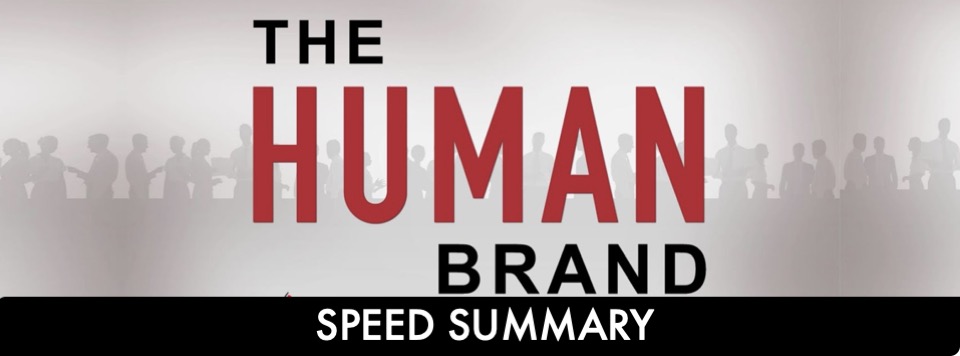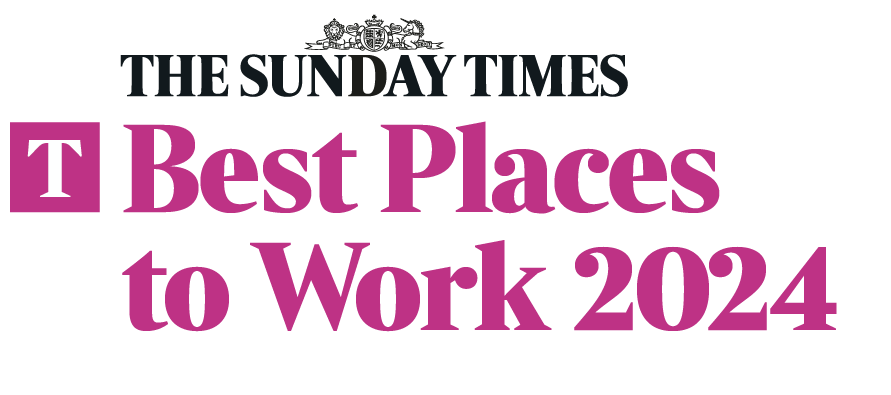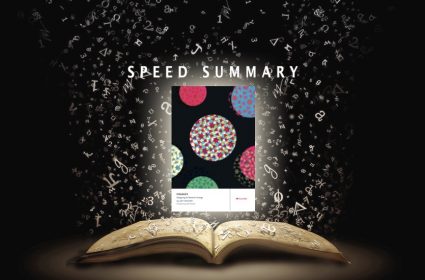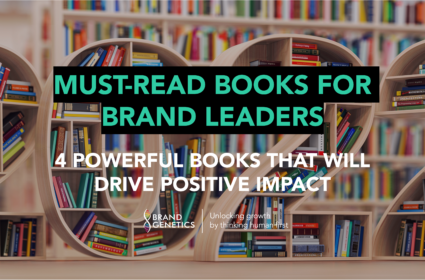Speed Summary: The Human Brand

- The Human Brand
- Author: Chris Malone and Susan T. Fiske
- Publisher: John Wiley & Sons
- Publication: (2013)
As humans, we have an innate tendency to make rapid judgements of other people. Based on what we see and know, we consciously (and subconsciously) make judgements and shift our behaviour accordingly.
But what about when it comes to companies and brands? Or even products for that matter?
That’s the question that marketing consultant Chris Malone and social psychologist Susan T. Fiske set out to address in The Human Brand.
According to their work, ‘we relate to companies, brands, and products in the same way that we naturally perceive, judge, and behave toward one another’: using the two social perception domains from social psychology, warmth and competence.
After first explaining warmth and competence domains in detail, they go on to show how companies that are perceived as both warm and competent experience the greatest success – not only do consumers view them more positively on average, but they exhibit more loyalty towards them and their products. They further argue that the world of brands and businesses is moving from one focused purely on one-way marketing – the ‘Middle Ages of Marketing’ – to two-way relationships – what they’ve termed the ‘Relationship Renaissance.’ Finally, they leave readers with three key takeaways for how best to navigate – and succeed – in the Relationship Renaissance.
Warmth and competence
Warmth is defined as a measure of ‘worthy intentions,’ i.e. how worthy (or unworthy) the intentions of other people are towards you. Perceived warmth traits include: warm, friendly, likeable, trustworthy, honest, and sincere.
Competence is defined as a measure of the ability to carry out those intentions, i.e. how capable someone is of carrying out those intentions. Perceived competence traits include: capable, intelligent, and skilled.
When combined together, warmth and competence perceptions ‘reflect distinctive sets of emotions and behavioural responses. Each combined pattern of warmth and competence perceptions leads to a predictable set of human emotions, and those emotions stimulate a predictable pattern of behaviour’:
| Warmth Assessment | Competency Assessment | Emotional Response | Behavioural Response | |||
| Warm | + | Competent | > | Admiration, Pride | > | Attraction, Affiliation, Alliance |
| Cold | + | Competent | > | Envy, Jealousy | > | Obligation Association, Potential Sabotage |
| Warm | + | Incompetent | > | Sympathy, Pity | > | Patronizing Help, Social Neglect |
| Cold | + | Incompetent | > | Contempt, Disgust | > | Rejection, Avoidance |
These perceptions apply not only to people but to brands and companies as well, influencing how we feel and behave towards them:

“Companies and brands win our affiliation and loyalty just as real people do, by worthy intentions and capability, through warmth and competence.”
The Shift
So why does this ultimately matter?
Malone and Fiske posit that the world of brands and products has transitioned from the ‘Middle Ages of Marketing’ — where marketing grew in response to the change from goods made from ‘known hands’ to ‘unknown hands’ of mass production, in order to engender and replace the trust that was lost – to now a ‘Relationship Renaissance’ — where, with the rise of technology and access to information, “customers have near-instantaneous power to pass judgment on how companies and brands conduct themselves in public,” a power that “will continue to grow for decades to come.” This means that companies and brands need to be cognizant of how they are perceived within warmth and competence domains if they want to be successful.
And this is not merely hypothetical – Malone’s and Fiske’s research has shown that people are more loyal to those brands and business they perceive as warm and competent – so these new relationships have the potential to drive consumer loyalty and engagement.
How to Succeed in the Relationship Renaissance
The three steps for succeeding in the Relationship Renaissance:
Step 1: Become more self-aware, by soliciting open and honest feedback
You may think you know how people feel about you and your business, but it is only by asking your customers and non-customers that you will learn the truth.
Step 2: Embrace significant change, that comes as result of what you’ve learned in step 1
We expect to be able to communicate with companies and we expect them to listen – this two-way communication is the basis for any relationship. Sometimes your harshest critics can become your most loyal fans, if they feel they’ve been heard and more importantly listened to.
Step 3: Fundamentally shift priorities to ensure lasting impact
In order to drive change that lasts, companies will need to undergo “a sincere examination and adjustment of the goals and priorities that led [them] astray in the first place” – shifting from “an excessive focus on short-term shareholder value” to a long-term “balanced approach that creates shared value for multiple stakeholders,” from shareholders to customers to employees.
Ultimately, brands and businesses need to not only become more self-aware and mindful of their customers’ warmth and competence perceptions but adapt accordingly — in order to foster and maintain more honest, human relationships.
The Brand Genetics Take
At Brand Genetics, we believe that the future is human. Therefore The Human Brand held obvious appeal to our fundamental philosophy and methodologies. While not everything in the book is directly transferable, there is certainly a lot from The Human Brand that is worth considering and adopting: the framework and language around warmth and competence domains for one; the notion that your brand is your people (from the bottom all the way to the top) and that brand relationships are like relationships with people (with research to prove it); ‘humanness’ is about warmth, dialogue, and being fallible; and finally the three steps for how to succeed in the Relationship Renaissance that is upon us. Overall, definitely a worthwhile read, whether you’re in the industry or not.




